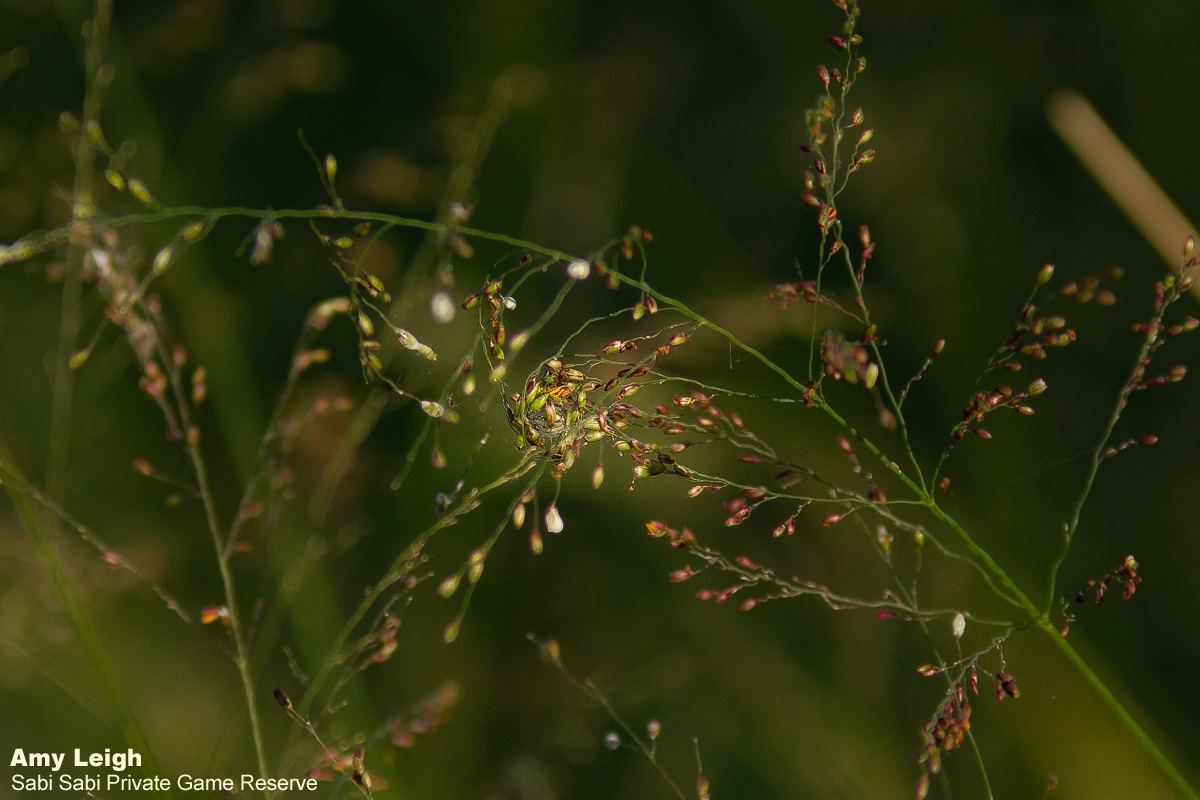Summer of Spiders
on May 25, 2021With the rains that come with summer in the Lowveld, so too come the long grasses, the dense foliage, the reptiles and the arthropods. Among the most prominent of arthropods are the cicadas which liven up the bushveld with their raucous calls, the fireflies which flash to their own rhythm in the dark of the night, and the spiders whose webs can be seen among the vegetation, covered in dew and shimmering in the morning light.
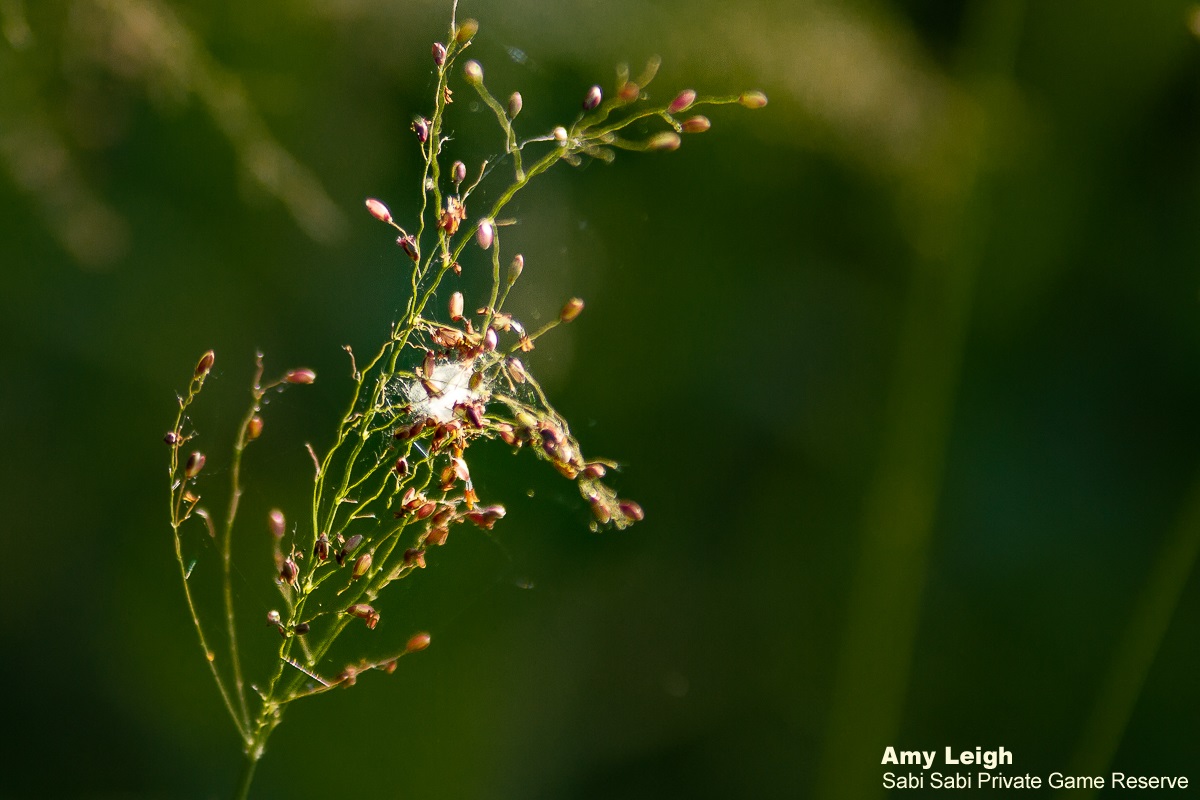
Spiders are classified as arachnids, of the order Araneae which includes over 39,000 species worldwide, with over 3,000 of these occurring in Southern Africa. The different types have their own unique hunting styles, including free-living spiders which actively hunt prey and web-bound spiders which rely on their webs to catch prey. Spiders generally have eight limbs and a body divided into two sections, the cephalothorax and the abdomen.
In the front portion of the body, the cephalothorax, these predators have venom glands, except for one family, producing venom which helps the hunters to immobilise their prey and also start the digestion process. In Southern Africa, there are only four medically important species, the rest of the spiders might not have a pleasant bite, but to humans they aren’t much of a threat... Even though some appear menacing, and have bright yellows and reds contrasting with black, a warning, known as aposematic colouration.
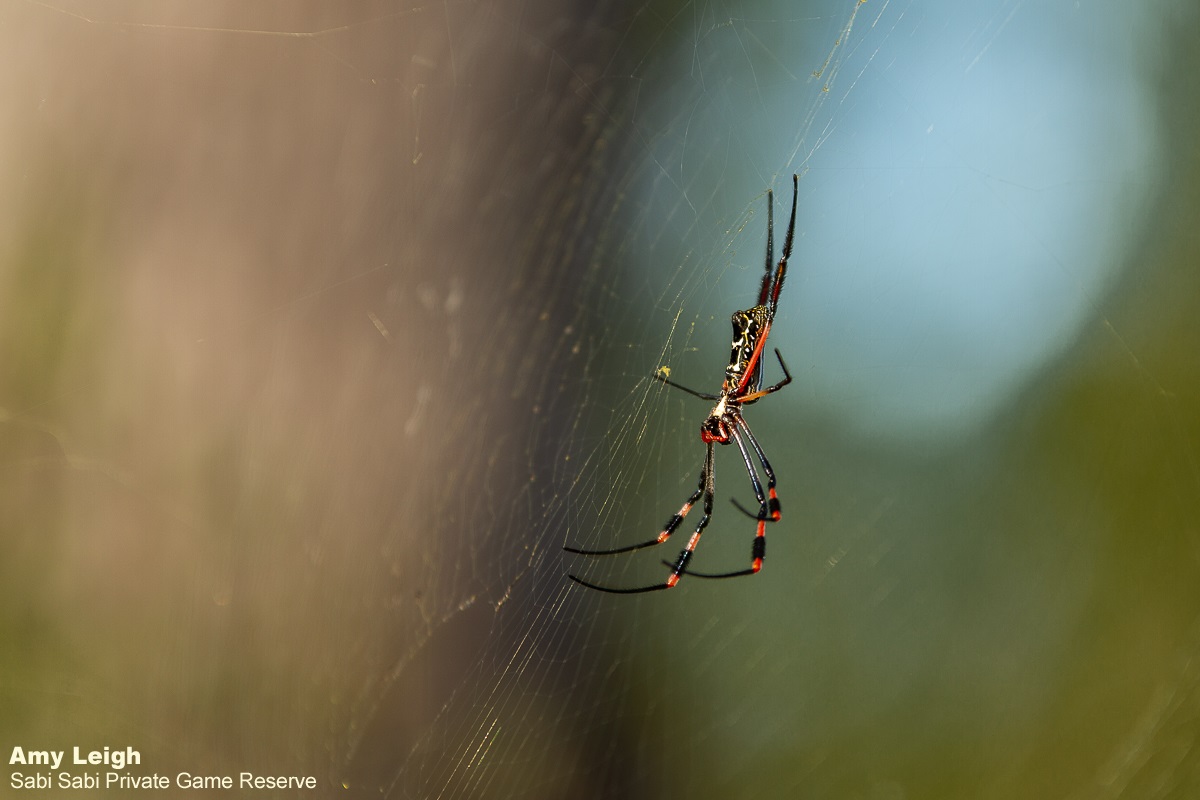
In the back portion of the body, the abdomen, true spiders will have multiple silk glands, each of which will produce a silk with a specific structure to fit its specific function. Combinations of different strands will be used to create distinct portions of the webs which require the silk to have specific features. For example, the main bridge line and foundation lines would be different from the inner catchment lines. Some lines are sticky, and some are not, and this all depends on the structure of the silk. Funnel-web Spiders forms a sheet web which is not sticky, but the moment something touches the lines the spider senses the contact and will run out onto the web to catch it.
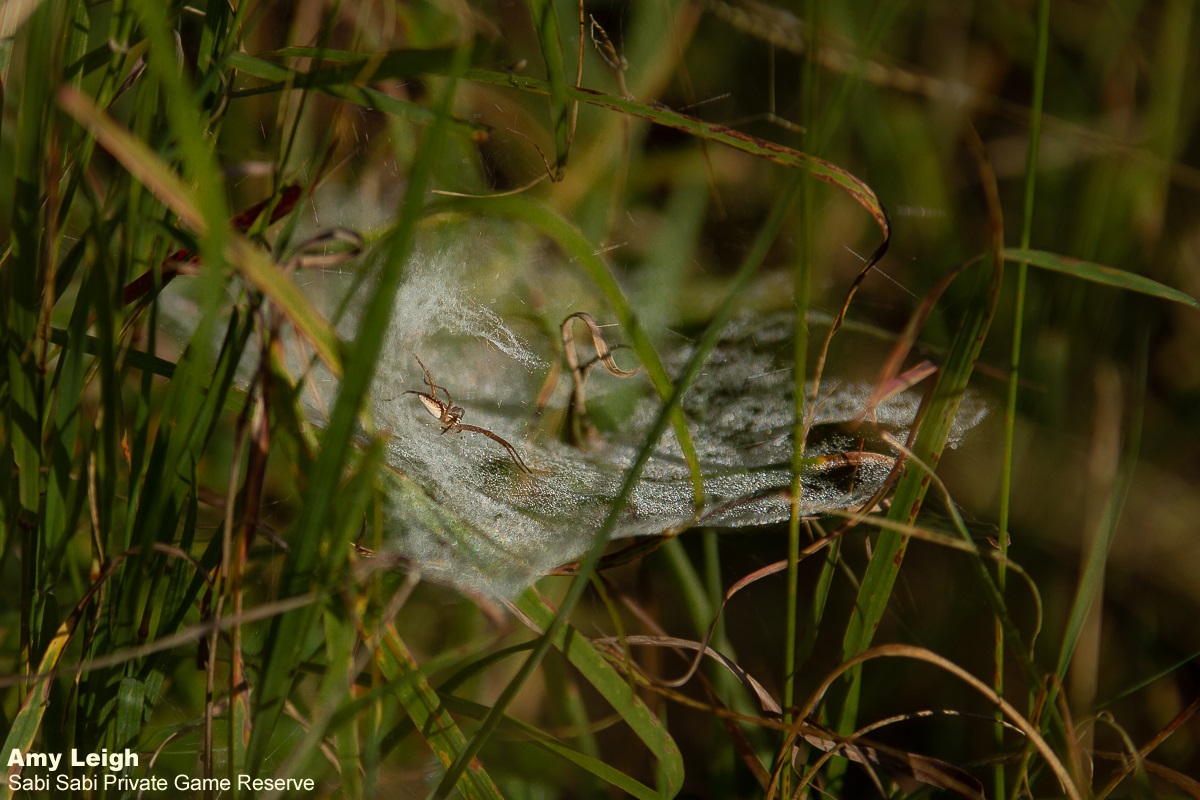
Amongst web-bound spiders there are so many unique web designs, not only between different species, but also different individuals. We see these creations clearly in the early mornings as the dew has settled on the silk and in illuminated in the sun, making the normally invisible webs quite clear, such as the Tropical Tent-web Spiders, whose unique web design makes up for the fact that their catchment lines are not sticky, so the complicated array of horizontal and vertical lines entangle the prey.
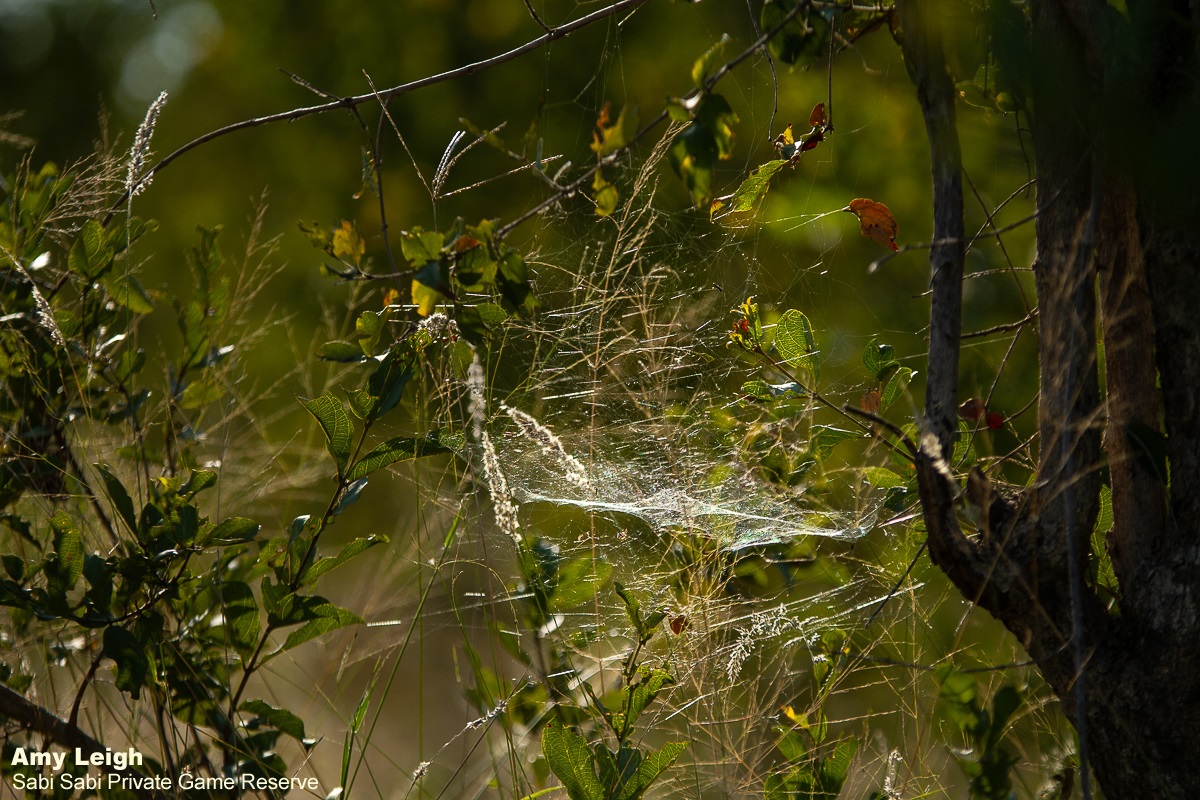
At Sabi Sabi, there are a number of species that stand out, the largest of which are the Golden Orb-web spiders whose webs span across wide distances between the vegetation, and shimmer yellow-gold in the sun. The females sit prominently in the center of their webs, often surrounded by the males (who are often up to 10 times smaller than she is) and dew-drop spiders who take advantage of the large web and the fact that she cannot possibly protect all the prey she has caught from their thievery.
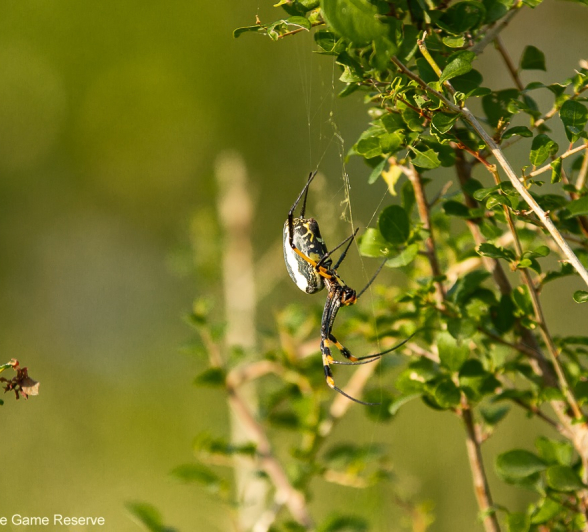
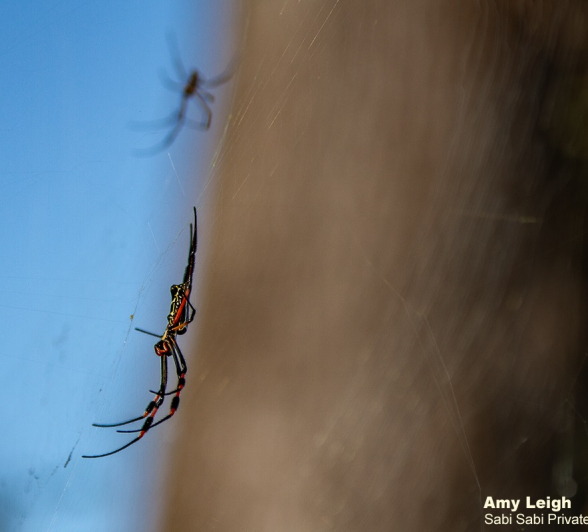
Some species produce a thickened area of silk, spun in a pattern known as the Stabilimentum, as seen with this Garden Orb-web Spider. This is believed to assist the spider in a number of ways, including making the web more visible to larger animals, stopping them from walking straight through and destroying the web. It may also allow the spider to camouflage better, making it more difficult for potential predators to locate them on the web. As well as improving the stability of the web construction.
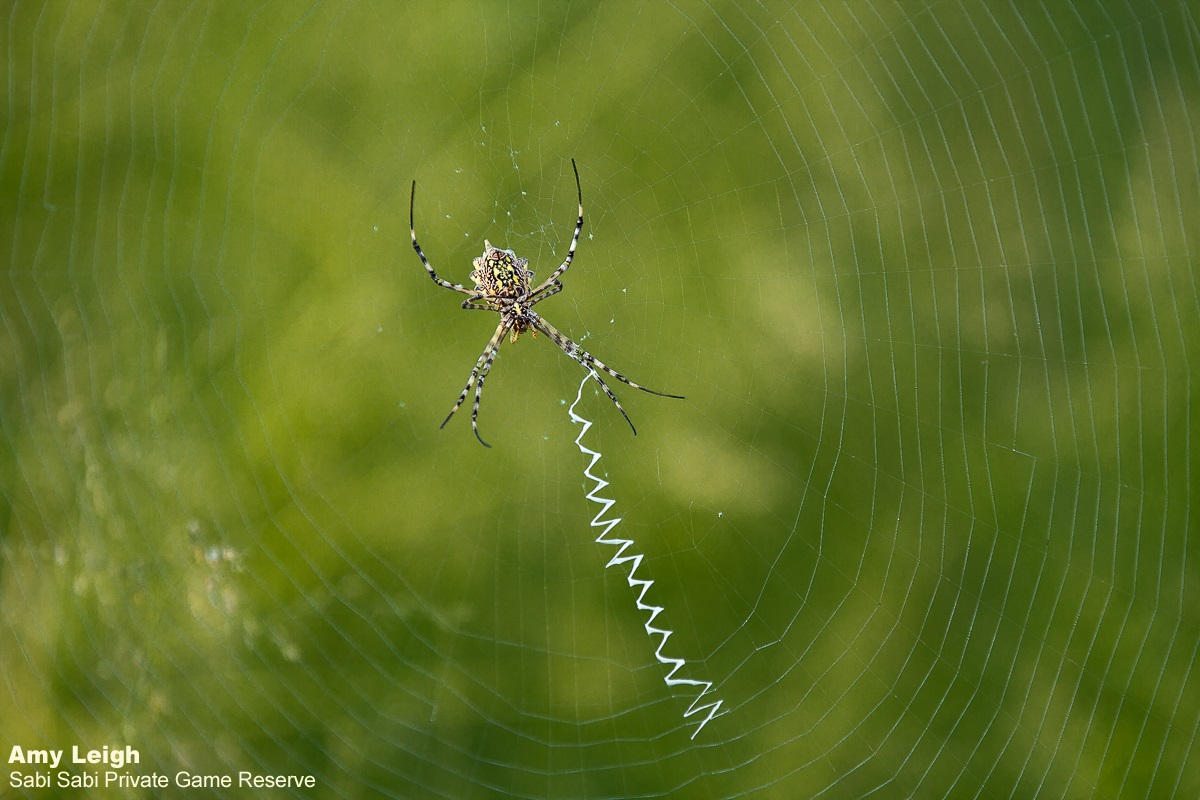
We will often also see large, messy silken constructions in the trees. These are the home of the Community-nest Spiders. A small, pale spider which spends the day protected from the harsh rays of the sun during the day and emerges out onto the web in the evenings.
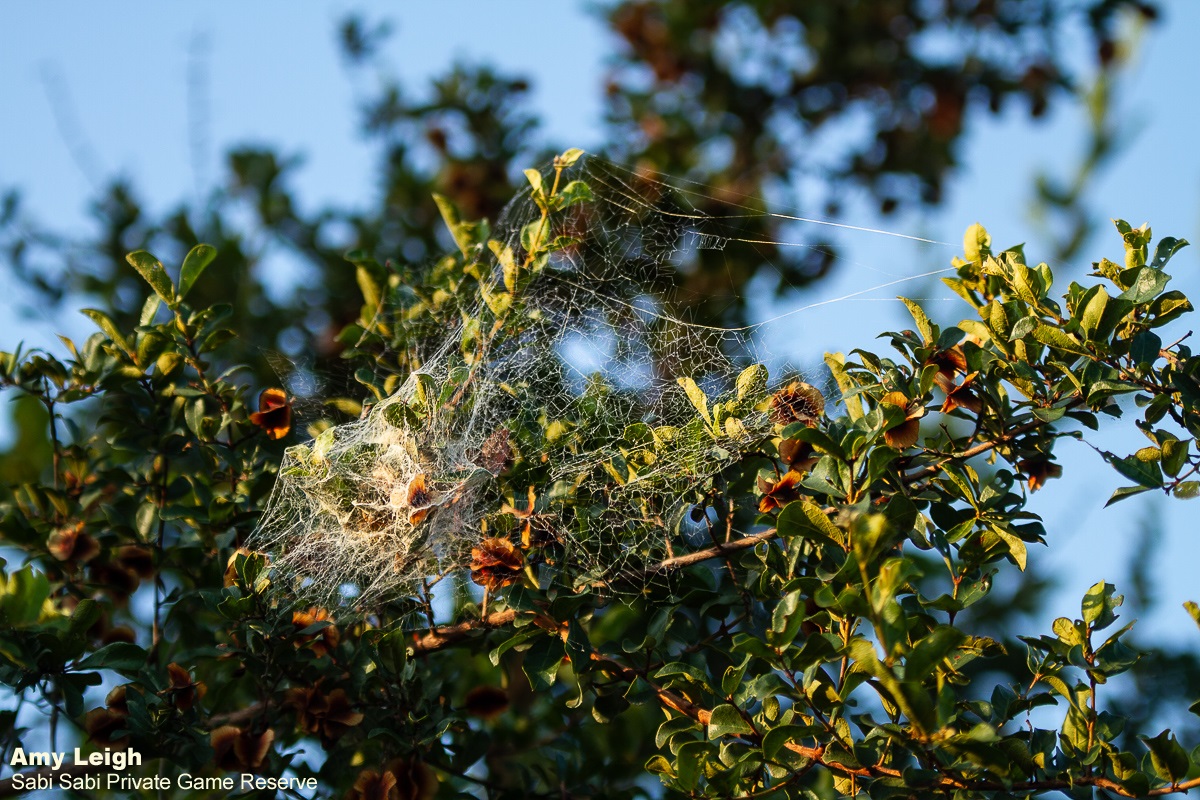
Each morning we can only appreciate how many of these creatures surround us, everywhere you look you see the webs from a tiny clump in the inflorescence of Guinea grass, to the strands spanning across a road. As the year progresses, we will slowly see fewer of these beautiful constructions, until next rainy season where we will again be able to appreciate the artistry of these amazing little predators.
